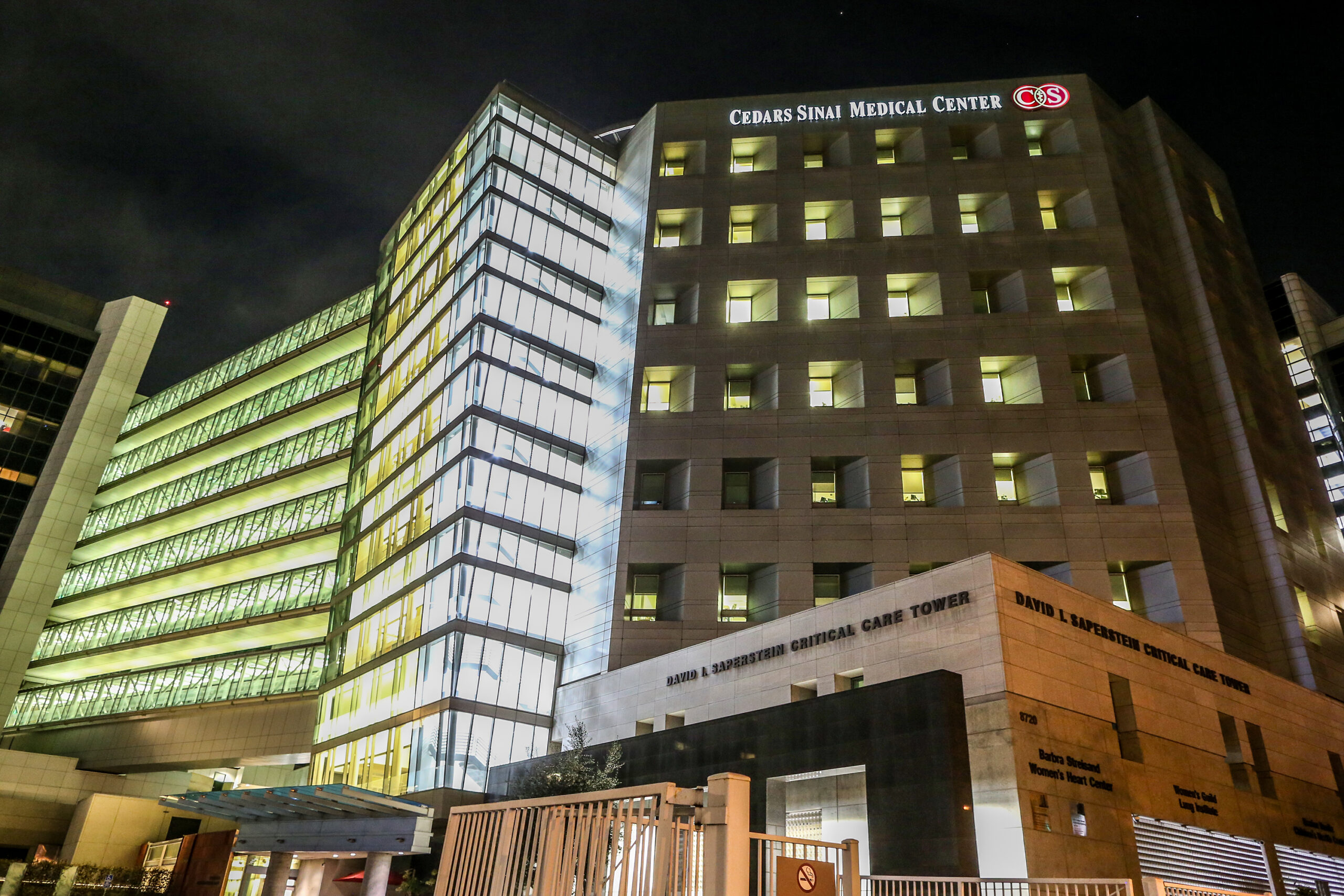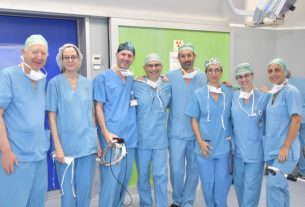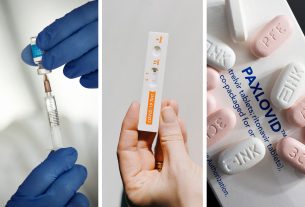[ad_1]
SACRAMENTO, Calif. — One of the country’s richest hospitals, which caters to Hollywood elites, accepted nearly $28 million last year from an unusual source: a charity that siphons money from other California hospitals, many of which serve the state’s poorest residents.
Cedars-Sinai Health System in Los Angeles secured the grant under California’s recession-era financing scheme that allows wealthy hospitals to take valuable health care tax money from poorer ones. Hospitals across the state agreed in 2009 to the arrangement in order to tap billions more per year in taxpayer dollars to support the state’s Medicaid program, called Medi-Cal.
Now, some of those hospitals serving a greater share of Medi-Cal patients are in dire financial need and face cutbacks and potential closures. But instead of asking for help for only those at greatest risk, California’s powerful hospital industry is putting the squeeze on Gov. Gavin Newsom and fellow Democratic lawmakers for an unprecedented bailout. And they are doing it even as the state faces a nearly $32 billion budget deficit.
Hospitals argue that to avert a crisis, they need an emergency infusion of $1.5 billion. They also want a steady annual stream of new health care tax money despite already having their own dedicated tax intended to support struggling facilities that serve a large percentage of the state’s low-income people, such as Madera Community Hospital in the Central Valley, which closed earlier this year.
Ads by the California Hospital Association paint a scary picture: “1 in 5 Hospitals are at risk of closure.” Yet another warns, “Health care that millions rely on is at risk.” Those claims are being repeated by state lawmakers as they debate financial rescue for hospitals.
But a KFF Health News analysis of state data revealed that despite increased labor costs and inflation, many California hospitals have been profitable in recent years. The industry earned roughly $131 billion last year in patient revenue, a key indicator of profitability — $7.3 billion more than the previous year. After factoring in rising costs, the industry still turned a profit of about $207 million last year. State figures show the industry reaped $9.2 billion in patient revenue in 2021, partly a reflection of big swings in the stock market.
Leading health care finance experts and former state officials are urging Newsom and lawmakers to resist the industry’s fear tactics, saying that, even though hospitals are still reeling from the covid-19 pandemic, many have plush financial reserves.
“They are big fans of these giant bailouts, where the relatively rich hospitals benefit as well as the ones who really need it,” said Glenn Melnick, a health economist at the University of Southern California. “A big chunk of the hospitals, even if they’re losing money, don’t need taxpayer money to help them through this crisis.”
Melnick and others who have analyzed the financial state of California hospitals say a sliver of California’s 368 general hospitals are in crisis and that relief should be given only to those that can show they are in immediate peril. Many hospitals in underserved and rural communities are struggling financially, in part because they have failed to attract enough patients with private insurance. And the cost of providing care to lower-income patients who rely on Medi-Cal hasn’t kept pace with government reimbursement rates.
But low Medi-Cal rates aren’t necessarily a predictor of financial disaster, according to a report released Thursday by the California Health Care Foundation. (KFF Health News publishes California Healthline, which is an editorially independent service of the California Health Care Foundation.)
Health economists found that hospitals “with the lowest margins were no more dependent on Medi-Cal or Medicare than the average California hospital.” And many cash-strapped hospitals may be sitting on enormous wealth, an indication they don’t necessarily need more taxpayer money.
“Most of the facilities that have negative margins are a part of larger systems, which suggests that they have the underlying wealth of those systems to stabilize them,” said Kristof Stremikis, director of market analysis and insight for the foundation.
Carmela Coyle, the influential leader of the state hospital lobby, said California’s hospitals are in the worst crisis they’ve faced in recent history, largely because the state reimburses providers just 74 cents on the dollar to care for Medi-Cal patients.
“You have these underserved communities in the Central Valley, where a hospital comes in, they’re doing their best, and those underserved individuals are not reimbursed the same as everybody else,” Coyle told KFF Health News. “The real underlying issue here is government underfunding.”
But Coyle isn’t disclosing the full picture. Experts agree that reimbursement rates in Medi-Cal — money provided to doctors, clinics, and hospitals for taking care of low-income patients — are too low to cover the actual cost of care. Yet the state and federal government give billions in bonus and incentive payments that can actually result in higher reimbursements and even profits.
After Madera Community Hospital cut off services and shuttered, Coyle warned that it was a “canary in the coal mine” for other hospitals unable to make ends meet because of its high proportion of low-income patients and reliance on government payments. But the hospital actually made nearly $15 million from Medi-Cal in 2021, KFF Health News has gleaned from state hospital financial records.
The overarching problem, according to emails obtained by KFF Health News, was an inability to demand higher payments from commercial health insurance companies, as well as attract their patients — 70% of whom sought care outside Madera County.
The hospital “does not have the ability to negotiate competitive rates on its own,” according to an email last June to the California attorney general’s office from representatives of Trinity Health, a national Catholic health system, which backed off from acquiring the hospital.
The Madera hospital’s CEO, Karen Paolinelli, and other hospital leaders made another last-ditch effort to keep its doors open: They asked for an advance payment of their hospital tax revenue — money distributed through health insurance plans and the state. The payment they sought was from the Hospital Quality Assurance Fee, which allows hospitals to tax themselves to draw in federal money for Medi-Cal. Adopted in California in 2009 and later approved by voters through a ballot initiative, the tax brought in $8.4 billion last year.
“We did ask before we closed to get paid some of the provider money owed to us,” Paolinelli said. “But we were not successful.”
She said the hospital needed $5 million to remain open and couldn’t secure funding in time.
Under the hospital tax revenue, the money is spread across California hospitals, but the system is designed to protect the rich hospitals and essentially help them avoid industry taxes.
Hospitals with a greater share of low-income patients pay a higher tax than wealthier systems that don’t serve as many poor people. However, they benefit handsomely, ultimately increasing how much they are paid to care for Medi-Cal patients. Then those hospitals give up a portion of their tax money to a charity that funnels it to better-performing hospitals in exchange for their political support for the hospital tax.
“The winner hospitals contribute money to a fund that is used to distribute money to the loser hospitals,” said Elaine Batchlor, CEO of MLK Community Health, which is asking for financial help because roughly 70% of its patients are on Medi-Cal. “No hospital loses by being a part of it. If you were going to lose money, you’d be against it.”
The transactions are routed through the California Health Foundation and Trust, the charity operated by the leadership of the California Hospital Association.
For example, Cedars-Sinai paid nearly $172 million in taxes in 2022, eclipsing the $151 million it got back in additional Medi-Cal dollars. To make up for the loss, it secured the nearly $28 million in grant revenue — earning nearly $6.9 million from the program, its commissioned tax audit shows.
Cedars-Sinai spokesperson Duke Helfand acknowledged the benefit from the taxing scheme but said the health system effectively subsidizes Medi-Cal enrollees and incurs losses of more than $180 million annually serving those low-income patients. “Over the years, our teams at Cedars-Sinai have effectively managed our financial resources, enabling us to provide exceptional patient care,” Helfand said.
By comparison, the faith-based Adventist Health, which serves more poor people and operates roughly two dozen hospitals in California, Oregon, and Hawaii, paid $148 million in taxes in 2022 and reaped $401 million in additional Medi-Cal dollars through the program, according to its independent tax audit. It then contributed $3 million of that money to the charity.
These sorts of financing arrangements are under federal scrutiny. Officials with the Centers for Medicare & Medicaid Services have blasted “hold harmless” deals that can result in wealthier hospitals receiving enough money back that they ultimately wind up paying little or no tax at all.
“A health care-related tax cannot have a hold harmless provision that guarantees to return all or a portion of the tax back to the taxpayer,” Daniel Tsai, deputy administrator and director for the federal Medicaid agency, wrote in February.
Dave Regan, president of Service Employees International Union-United Healthcare Workers West, which represents hospital workers, has long lambasted California’s scheme as a ploy that lets wealthy hospitals siphon valuable health care dollars from smaller, rural hospitals that need more support for Medi-Cal patients.
“We believe the policies and practices of the hospital industry, in large part, contribute to the problems that Madera faced,” Regan said. “The hospital industry is richer than it’s ever been — and it’s being disingenuous, trying to get the public to fork over more money at a time when they have more money than they’ve ever had.”
California Hospital Association spokesperson David Simon defended the charity, saying it helps “hospitals provide health care services despite losses” from the tax.
Hospital leaders say exorbitant costs and inflation have created extreme financial woes. Last year, California’s hospitals paid at least $10 billion more for labor, supplies, and other expenses than the year before, according to state hospital finance data. And overall, they saw substantially smaller investment gains, reporting nearly $119 million in non-operating revenue compared with $6 billion the year before — a big blow to their financial cushion to ensure patient care.
The industry points out 200 hospitals had negative operating margins last year, yet KFF Health News found that, even before the pandemic, about 160 hospitals reported losing money in their operating budgets. Experts say the finding underscores the reality that hospitals operate on slim margins.
And, credit ratings agencies have recently upgraded the bonds of a number of hospitals and health systems, including Sutter Health in Northern California and Loma Linda University Medical Center in San Bernardino County.
“We just upgraded Sutter like two weeks ago, so it would be very hard-pressed, for me, to look at California and say California is looking bad,” said Kevin Holloran, a senior director at Fitch Ratings.
Some Democratic lawmakers agree that not all hospitals need a bailout. Instead, they favor targeted relief such as a $150 million loan program that Newsom signed into law earlier this month to help struggling hospitals.
“I’m not a big fan of writing everybody a check,” said Democratic Assemblymember Jim Wood, chair of the Health Committee, who says hospitals ought to be more transparent about their finances before state taxpayers give them any more money. “If you’re a hospital system that’s doing well, I don’t believe you should be getting any additional resources from the state.”
KFF Health News senior correspondent Bernard J. Wolfson contributed to this report.
This article was produced by KFF Health News, which publishes California Healthline, an editorially independent service of the California Health Care Foundation.
[ad_2]
Source link



